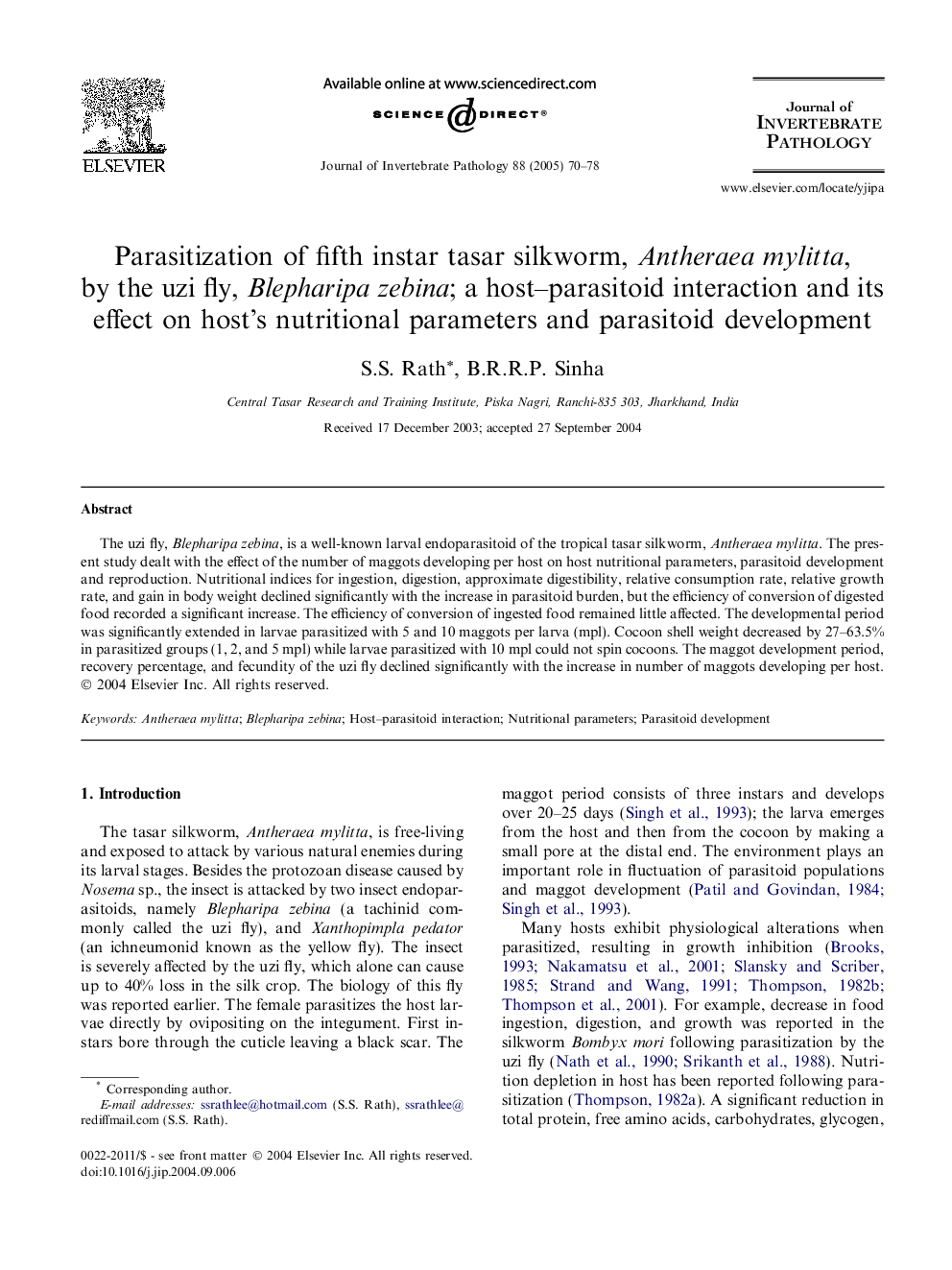| Article ID | Journal | Published Year | Pages | File Type |
|---|---|---|---|---|
| 9486659 | Journal of Invertebrate Pathology | 2005 | 9 Pages |
Abstract
The uzi fly, Blepharipa zebina, is a well-known larval endoparasitoid of the tropical tasar silkworm, Antheraea mylitta. The present study dealt with the effect of the number of maggots developing per host on host nutritional parameters, parasitoid development and reproduction. Nutritional indices for ingestion, digestion, approximate digestibility, relative consumption rate, relative growth rate, and gain in body weight declined significantly with the increase in parasitoid burden, but the efficiency of conversion of digested food recorded a significant increase. The efficiency of conversion of ingested food remained little affected. The developmental period was significantly extended in larvae parasitized with 5 and 10 maggots per larva (mpl). Cocoon shell weight decreased by 27-63.5% in parasitized groups (1, 2, and 5Â mpl) while larvae parasitized with 10Â mpl could not spin cocoons. The maggot development period, recovery percentage, and fecundity of the uzi fly declined significantly with the increase in number of maggots developing per host.
Related Topics
Life Sciences
Agricultural and Biological Sciences
Ecology, Evolution, Behavior and Systematics
Authors
S.S. Rath, B.R.R.P. Sinha,
